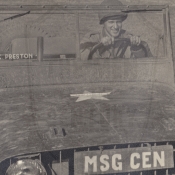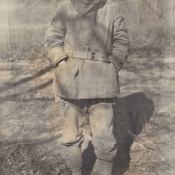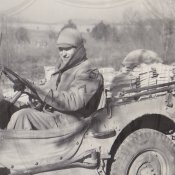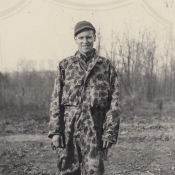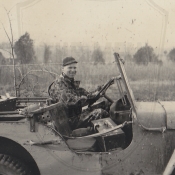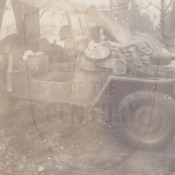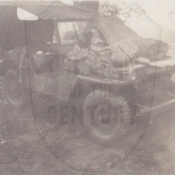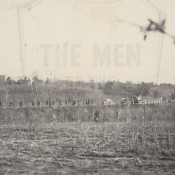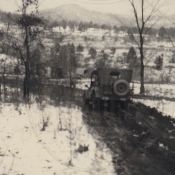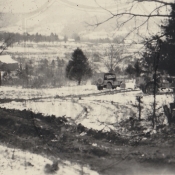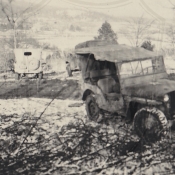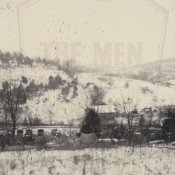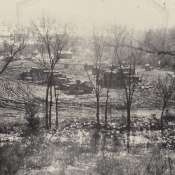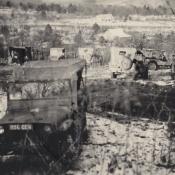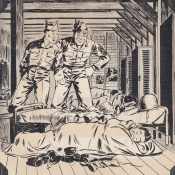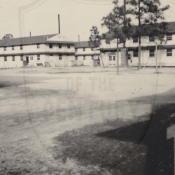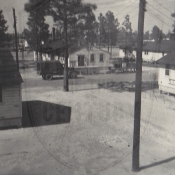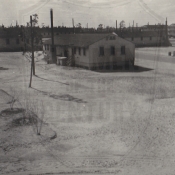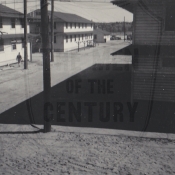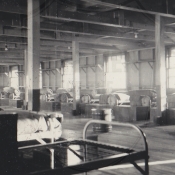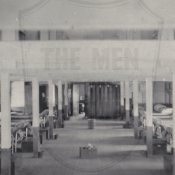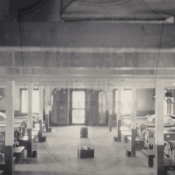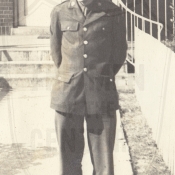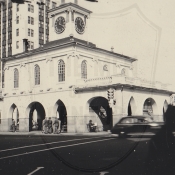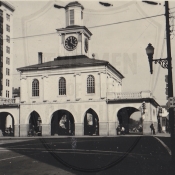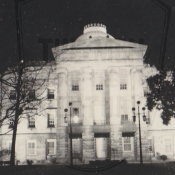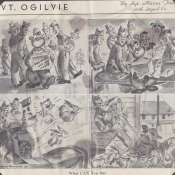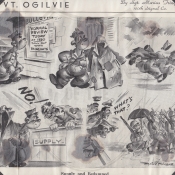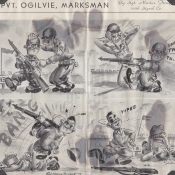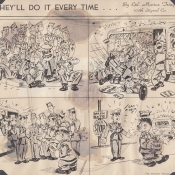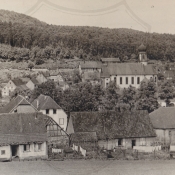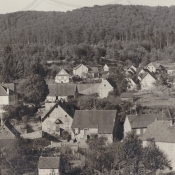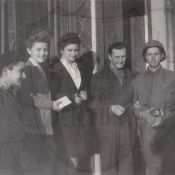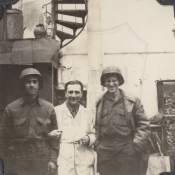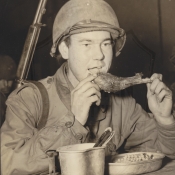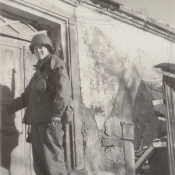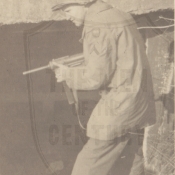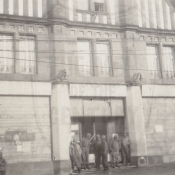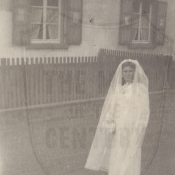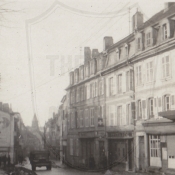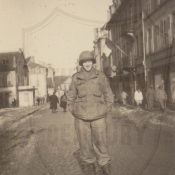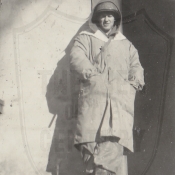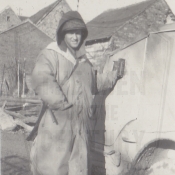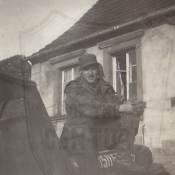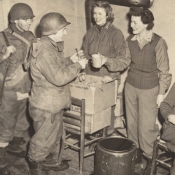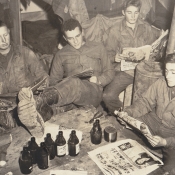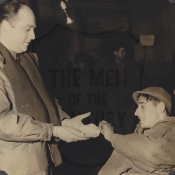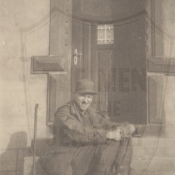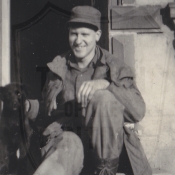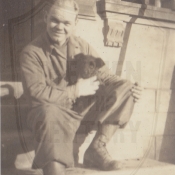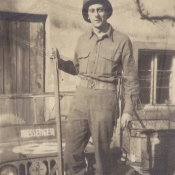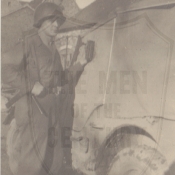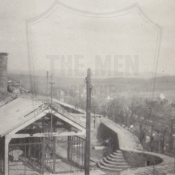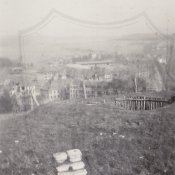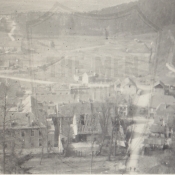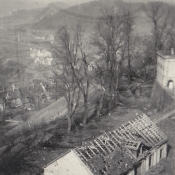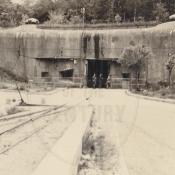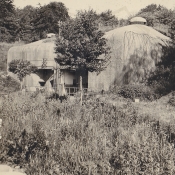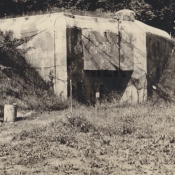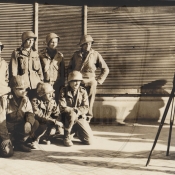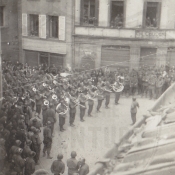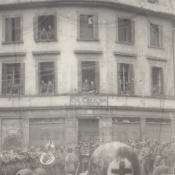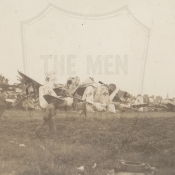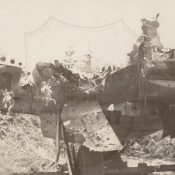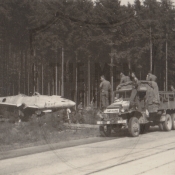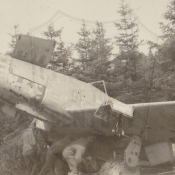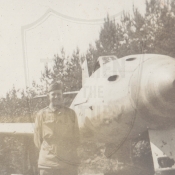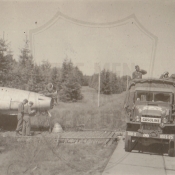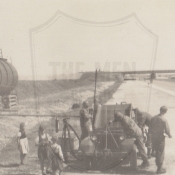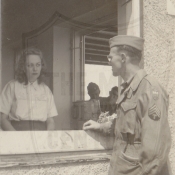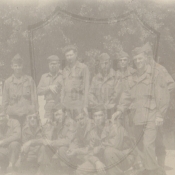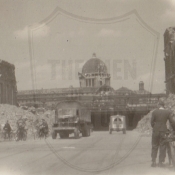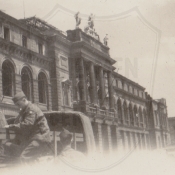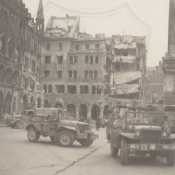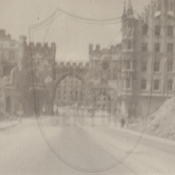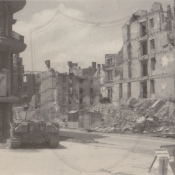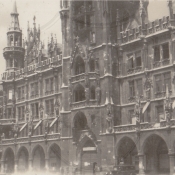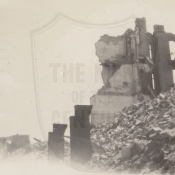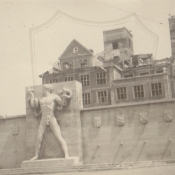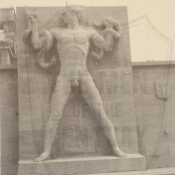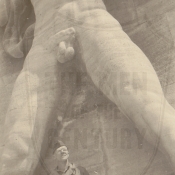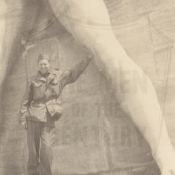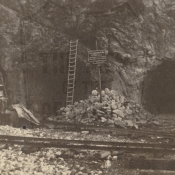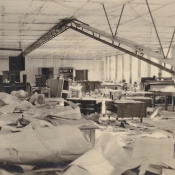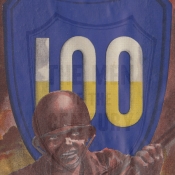
My second visit home after turning soldier was an emergency furlough due to the passing of my Grandfather. While the reason for being home was a sad one, I still took advantage of the time I was able to spend with Marie, and of course, some photographs resulted.
Shortly after returning to camp after my emergency furlough we left Fort Jackson for two months of winter maneuvers in Tennessee. We had been at Fort Jackson for just about one year. It was a three-day truck convoy to the hills of Tennessee and our two months stay out in the open with only a tent for a roof over our heads. Looking back now I realize that the Tennessee maneuvers were worse than actual combat, although of course, the danger was not present. In Europe, I always had a building of some kind to sleep in, but in Tennessee a tent was the best we had.
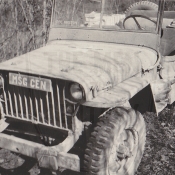
Higher headquarters sent us piles and piles of Army manuals which we had to deliver. They usually were so wet and muddy by the time we delivered them that they couldn't have been read even if the infantry boys had wanted to, and they didn't. Tennessee, 1943.
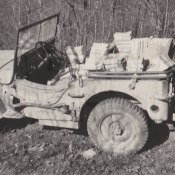
Higher headquarters sent us piles and piles of Army manuals which we had to deliver. They usually were so wet and muddy by the time we delivered them that they couldn't have been read even if the infantry boys had wanted to, and they didn't. Tennessee, 1943.
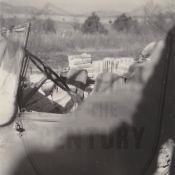
The Tennessee dirt roads were in pretty good condition when we arrived, but we soon changed that. I hope I never see that much mud in one place again. Tennessee, 1943.
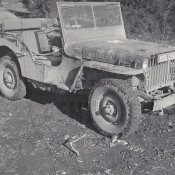
Although the weather was cold, the mud was our worst enemy. My jeep was constantly covered with a thick coating of mud, and it seemed that it would never stop raining. On one of the few sunny days, I took these pictures of my jeep. Tennessee, 1943.
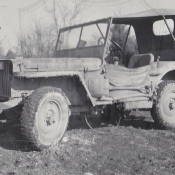
Although the weather was cold, the mud was our worst enemy. My jeep was constantly covered with a thick coating of mud, and it seemed that it would never stop raining. On one of the few sunny days, I took these pictures of my jeep. Tennessee, 1943.
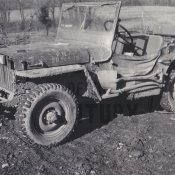
Although the weather was cold, the mud was our worst enemy. My jeep was constantly covered with a thick coating of mud, and it seemed that it would never stop raining. On one of the few sunny days, I took these pictures of my jeep. Tennessee, 1943.
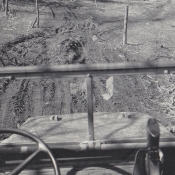
Although the weather was cold, the mud was our worst enemy. My jeep was constantly covered with a thick coating of mud, and it seemed that it would never stop raining. On one of the few sunny days, I took these pictures of my jeep. Tennessee, 1943.
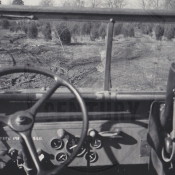
Although the weather was cold, the mud was our worst enemy. My jeep was constantly covered with a thick coating of mud, and it seemed that it would never stop raining. On one of the few sunny days, I took these pictures of my jeep. Tennessee, 1943.
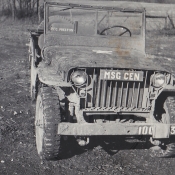
Although the weather was cold, the mud was our worst enemy. My jeep was constantly covered with a thick coating of mud, and it seemed that it would never stop raining. On one of the few sunny days, I took these pictures of my jeep. Tennessee, 1943.
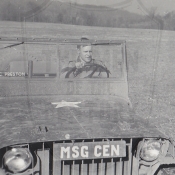
As a Message Center driver, I spent most of my time in my jeep, bouncing along the Tennessee backroads, which we soon turned into a quagmire of mud. Tennessee, 1943.
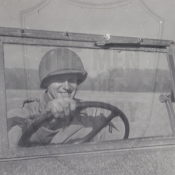
As a Message Center driver, I spent most of my time in my jeep, bouncing along the Tennessee backroads, which we soon turned into a quagmire of mud. Tennessee, 1943.
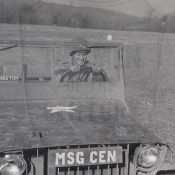
As a Message Center driver, I spent most of my time in my jeep, bouncing along the Tennessee backroads, which we soon turned into a quagmire of mud. Tennessee, 1943.
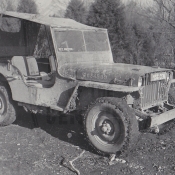
As a Message Center driver, I spent most of my time in my jeep, bouncing along the Tennessee backroads, which we soon turned into a quagmire of mud. Tennessee, 1943.
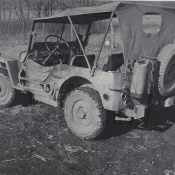
As a Message Center driver, I spent most of my time in my jeep, bouncing along the Tennessee backroads, which we soon turned into a quagmire of mud. Tennessee, 1943.
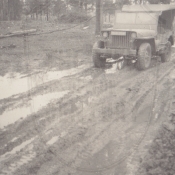
The Tennessee dirt roads were in pretty good condition when we arrived but we soon changed that. I hope I never see that much mud in one place again. Tennessee, 1943.
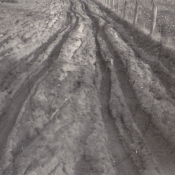
The Tennessee dirt roads were in pretty good condition when we arrived but we soon changed that. I hope I never see that much mud in one place again. Tennessee, 1943.
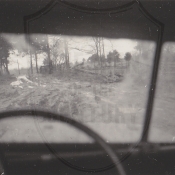
The muddy road as I saw it through the windshield. Our windshield wipers had to be operated by hand and the flying mud kept us constantly busy keeping a cleared area to see through. Tennessee, 1943.
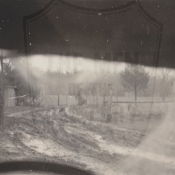
The muddy road as I saw it through the windshield. Our windshield wipers had to be operated by hand and the flying mud kept us constantly busy keeping a cleared area to see through. Tennessee, 1943.
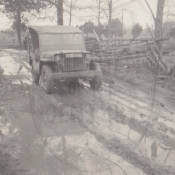
The muddy road as I saw it through the windshield. Our windshield wipers had to be operated by hand and the flying mud kept us constantly busy keeping a cleared area to see through. Tennessee, 1943.
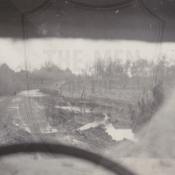
The muddy road as I saw it through the windshield. Our windshield wipers had to be operated by hand and the flying mud kept us constantly busy keeping a cleared area to see through. Tennessee, 1943.
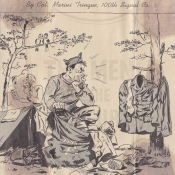
We certainly looked a wrinkled mess when we went to Nashville on pass, but it was the only way to get a shower and see something of civilization.
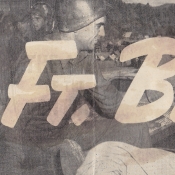
After two months of sleeping, eating, and living in the mud of Tennessee, we were mighty glad to hear that we were going to Fort Bragg in North Carolina where we would have real beds with a floor and roof between us and the elements.
Back at Fort Bragg again, and back to the old routine of drill and army life. Again weekend passes came to be my only contact with civilian life, and I took off to see North Carolina every time I could get a pass.
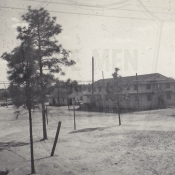
We lived in two-story barracks, much different than the small huts of Fort Jackson. Fort Bragg, North Carolina, 1944.
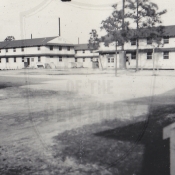
We lived in two-story barracks, much different than the small huts of Fort Jackson. Fort Bragg, North Carolina, 1944.
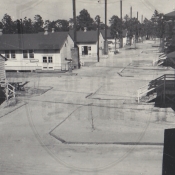
We lived in two-story barracks, much different than the small huts of Fort Jackson. Fort Bragg, North Carolina, 1944.
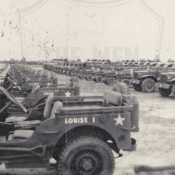
We put on so many Division Reviews for various visiting notables that we began to think we were a "show Division," and would never see any action. Fort Bragg, North Carolina, 1944.
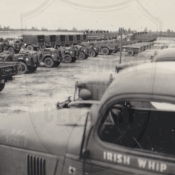
We put on so many Division Reviews for various visiting notables that we began to think we were a "show Division," and would never see any action. Fort Bragg, North Carolina, 1944.
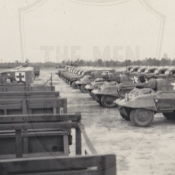
We put on so many Division Reviews for various visiting notables that we began to think we were a "show Division," and would never see any action. Fort Bragg, North Carolina, 1944.
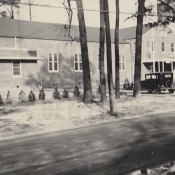
The nearest town to Fort Bragg is Fayetteville, a small place offering little to the G.I. except for a couple of fairly good U.S.O. Buildings, this one being the best. Most of these pictures were made in the darkroom of this U.S.O.
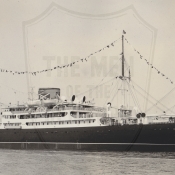
Former troopship "S.S. J.W. McAndrew" which took the Signal Company to France. This ship was one of about 15 in the convoy carrying the 100th Division.
On October 6, 1944, I sailed from New York City, and after a hectic crossing, landed in Marseilles, France on October 20th. We were the first fighting troops to land there and after the city was captured, so our assembly camp was a nicely prepared field of mud. And then the rains came. I had little opportunity to take pictures, as K.P. and Guard duty kept me pretty busy.
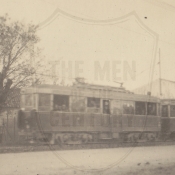
Marseilles, France-double trolley trains, and overloaded wood-burning buses drew our interest along with the local "Frogs."
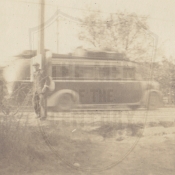
Marseilles, France-double trolley trains, and overloaded wood-burning buses drew our interest along with the local "Frogs."
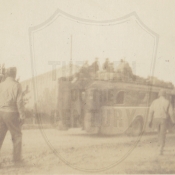
Marseilles, France-double trolley trains, and overloaded wood-burning buses drew our interest along with the local "Frogs."
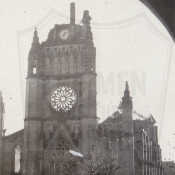
The Nazis had used this Baccarat church as a radio depot, so the French underground destroyed it. Baccarat, France, November 1944.
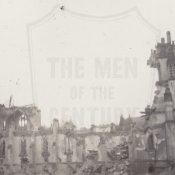
The Nazis had used this Baccarat church as a radio depot, so the French underground destroyed it. Baccarat, France, November 1944.
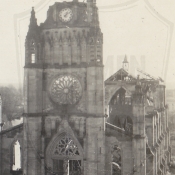
The Nazis had used this Baccarat church as a radio depot, so the French underground destroyed it. Baccarat, France, November 1944.
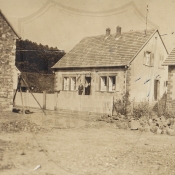
Wingen, France - I lived in this house about two weeks. Later, after we had moved on, the Krauts recaptured the town and destroyed every house as punishment to the French for letting us live in their houses.
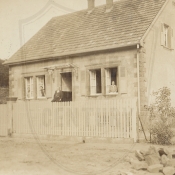
Wingen, France - I lived in this house about two weeks. Later, after we had moved on, the Krauts recaptured the town and destroyed every house as punishment to the French for letting us live in their houses.
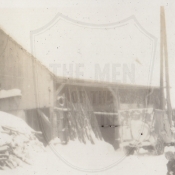
We saw a good deal of snow during our three month stay in Butten. This was during the "Big Push" of the Germans.
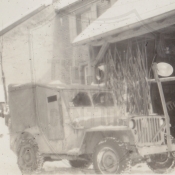
Two views of my jeep. The wire cutter was for protection against beheading wires, a favorite German trick.
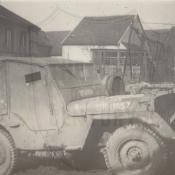
Two views of my jeep. The wire cutter was for protection against beheading wires, a favorite German trick.
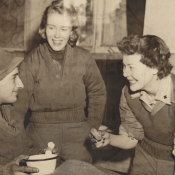
The American Red Cross girls brought doughnuts and coffee to all the men of the Division on a regular schedule.
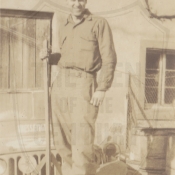
We were called the "Pony Express Riders" as we delivered the Division's messages by jeep. Butten, France, March 1945
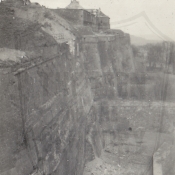
The centuries-old Bitche Citadel Fortress was a mainstay in the German defence line, and tough nut to crack. Bitche, France, March 1945.
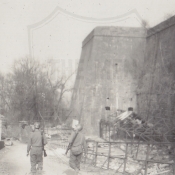
The only way into the Citadel was by this road which tunneled up thru the fortress itself. Bitche, France, March 1945.
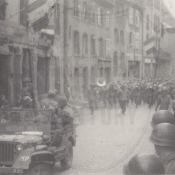
The liberation of the fortress Bitche was a real cause for celebration, as it took three months, due to the German's "Big Push." Bitche, France, March 1945.
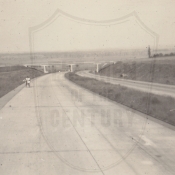
The Stuttgart-Munich autobahn, one of a network system covering all of Germany. Munich, Germany, May 1945.
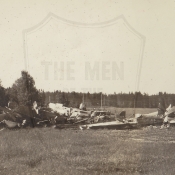
We found these wrecked German jet-propelled planes along the Munich autobahn, which had served as a landing strip. Munich, Germany, May 1945.
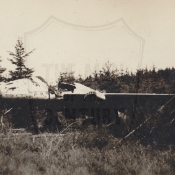
We gave the jet planes a once over but found them thoroughly stripped by those who got there first. Munich, Germany, May 1945.
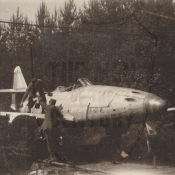
We gave the jet planes a once over but found them thoroughly stripped by those who got there first. Munich, Germany, May 1945.
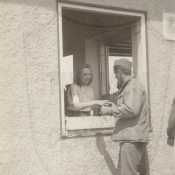
The American Red Cross had set up a doughnut stand in a former gas station on the Stuttgart-Munich autobahn. Munich, Germany, May 1945.
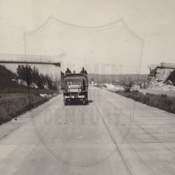
Most of the large bridges on the autobahn were blown up to block the highway. Munich, Germany, May 1945.
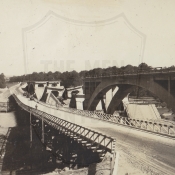
Army Engineers have built a wooden bridge to replace the autobahn bridge blown up by the Germans. Munich, Germany, May 1945.
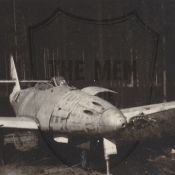
The following pictures were taken by other fellows on their tours of Germany and Austria. I di not visit these places, unfortunately.
German jet propelled plane along the Munich autobahn. The dual highway had been united to form a wide concrete landing strip.
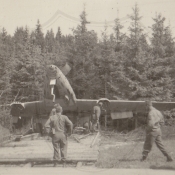
The following pictures were taken by other fellows on their tours of Germany and Austria. I di not visit these places, unfortunately.
The jet planes had been concealed in the brush along the converted autobahn.
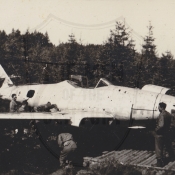
The following pictures were taken by other fellows on their tours of Germany and Austria. I di not visit these places, unfortunately.
Examining German jet-propelled planes.
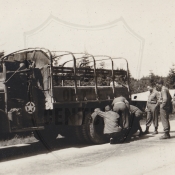
The following pictures were taken by other fellows on their tours of Germany and Austria. I di not visit these places, unfortunately.
No army trip is complete without at least one flat tire.
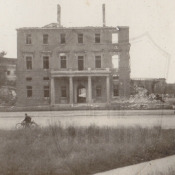
The following pictures were taken by other fellows on their tours of Germany and Austria. I di not visit these places, unfortunately.
The "Brown House"- a Munich beer hall made famous by Hitler at the start of the war.
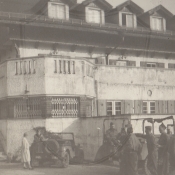
The following pictures were taken by other fellows on their tours of Germany and Austria. I di not visit these places, unfortunately.
Rottach, Germany - an overnight stop for one tour.
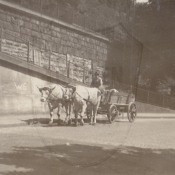
The following pictures were taken by other fellows on their tours of Germany and Austria. I di not visit these places, unfortunately.
A familiar scene anywhere in Germany or France.
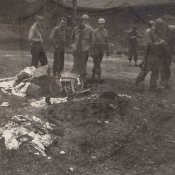
The following pictures were taken by other fellows on their tours of Germany and Austria. I di not visit these places, unfortunately.
A pile of human ashes outside the Dachau Concentration Camp furnaces.
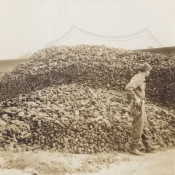
The following pictures were taken by other fellows on their tours of Germany and Austria. I di not visit these places, unfortunately.
Shoes of Dachau victims.
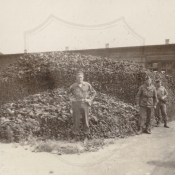
The following pictures were taken by other fellows on their tours of Germany and Austria. I di not visit these places, unfortunately.
These are shoes removed from the victims of Nazi butchery.
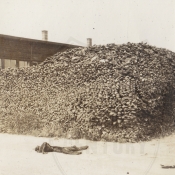
The following pictures were taken by other fellows on their tours of Germany and Austria. I di not visit these places, unfortunately.
Pile of shoes taken from Dachau victims before cremation.
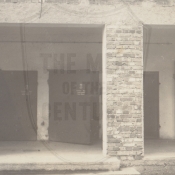
The following pictures were taken by other fellows on their tours of Germany and Austria. I di not visit these places, unfortunately.
The gas chambers for executions.
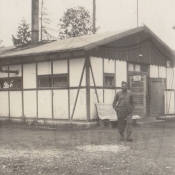
The following pictures were taken by other fellows on their tours of Germany and Austria. I di not visit these places, unfortunately.
Felix Ortega outside the Dachau Crematory building.
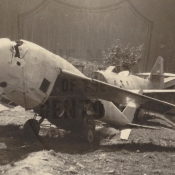
The following pictures were taken by other fellows on their tours of Germany and Austria. I di not visit these places, unfortunately.
These are wooden mock-up models of jet-propelled Messerschmitts the factory was conducting experiments on. Oberammergau, Germany.
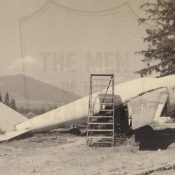
The following pictures were taken by other fellows on their tours of Germany and Austria. I di not visit these places, unfortunately.
The Allies did not know this model existed until this factory was taken. This is only a wooden model of the plane. Oberammergau, Germany.


